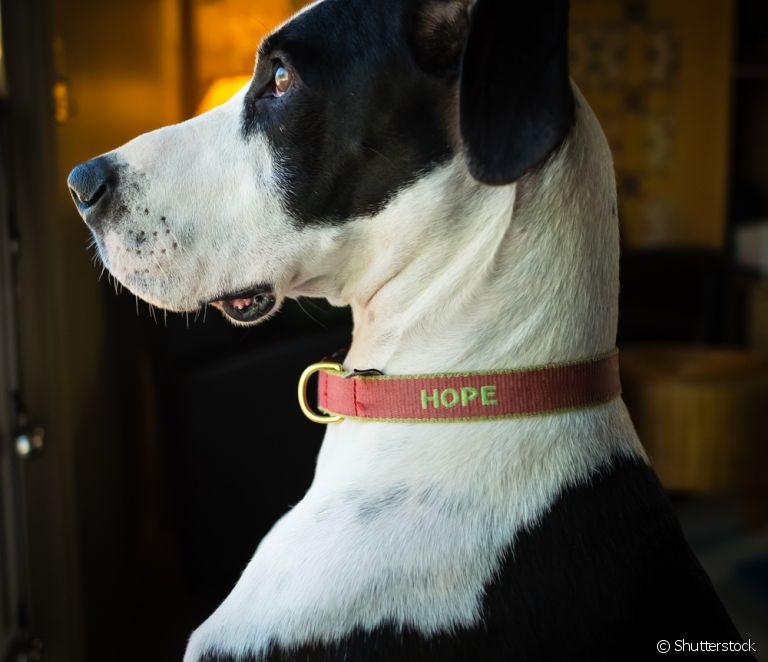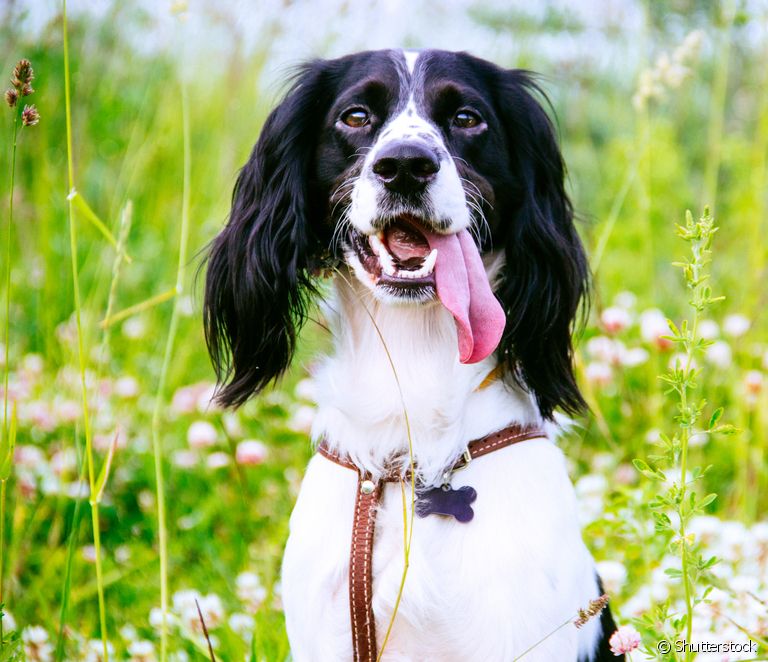Dog collars with ID: what is the importance and how to choose the best one for your pet?

Table of contents
If you've ever lost a pet, you probably know the importance of keeping a collar with identification on your dog. With the contact number and other relevant information attached to the pet's neck, the chances of you recovering it increase considerably, should it get loose from the leash or decide to go out in search of new adventures. Still, manyguardians postpone or resist the idea of identifying their pets. Below, we'll show you why an ID collar for dogs is important and the main models available on the market. Check it out!
See_also: White cat: characteristics, personality, health, breeds and careThe importance of wearing a dog collar even indoors
While out for a walk, even with the best type of dog collar, you should keep in mind that unforeseen events can happen and your pet may end up escaping from the leash. The dog may also run away from home or somehow disappear from your sight. To keep your pet protected at all times, you should identify it beforehand to ensure that it returns home if it gets separated from you. Without a dog collar accessory, you canidentification, it becomes very difficult for someone to find your pet and be able to return it.
While it may be tempting to free your dog from the discomfort of a leash in the house, it's best to keep your dog identified at all times. You never know what your dog's behavior will be when he finds an open door in front of you. Even if you're very careful, situations beyond your control may arise, so it's best to be prepared.
What information should the dog tag have?
There is often limited space to put text on your dog's ID pendant, so make sure you choose the most relevant contact information, such as the pet's name and main phone number. If your dog has a more serious health condition and is taking some regular medication, it may be helpful to include the name of the illness and the type of treatment. Here are some details thatcan be placed on the identification collar for puppies:
- Name of animal;
- Home telephone number with area code;
- Cell phone with area code;
- Address;
- E-mail;
- Medical or behavioral information;
- Alternative phone number (trusted person or the vet).
Collar models: identification is essential to keep your dog safe
From the simplest versions to the most technological models, the collars with the pet's name are accessories that make a guardian's life much easier. They are the universal symbol that your puppy has a home and a family waiting for him. There are really cheap products, such as the collar with an engraved dog tag, which can cost around R $ 20. Check out the main onesmodels:
See_also: How long does a tick live?- Flat collar with nameplate: Usually made of nylon or leather, the flat or neck collars can be purchased together with the personalized plastic or metal tags. The pendant is sold in various shapes and can be purchased separately;
- Embroidered collar: with the relevant information embroidered on the fabric itself, this type of collar is ideal for dogs that get distracted by the noise of the pendants. It allows customization of the text and colors, and the inclusion of elements such as stars, little bones and dog paws;
- Collar with riveted plate: this model, which has the plate attached to the collar, is also an alternative to the "clinking" of pendants that can bother dogs and, of course, us humans;
- Leather collar with engraved information: as with the embroidered model, the information engraved on the leather is less likely to wear off over time;
- With technological resources: it is possible to find ID collars with interesting features such as USB and QR codes. In this case, when someone reads the code with a smartphone, your dog's profile and information appears on a website. Some companies may charge a monthly subscription for the service.


The use of the identification collar is essential even for "microchipped" dogs
Even if your four-legged friend already has a dog microchip implanted in their skin, the ID collar is still a necessary resource. Since not all places have the chip reader available, the little tags with the information are still the fastest way for you to find your dog's whereabouts.
More tips for choosing the perfect dog ID collar:
- If your dog is unruly, perhaps a collar with a pendant swinging back and forth is not a good idea - especially in homes with babies and the elderly.
- It is important to buy quality products so that the pet's information is legible and does not fade over time. The ring that attaches the tag to the collar must be sturdy so that it does not come off easily.
- If the pendants cause any distraction or irritation to your dog, consider using the riveted ID tag or an embroidered collar with the data.
- Always slide two fingers between the collar and the animal's neck to check that it is fitted correctly. It must not be wide or too tight.
- For dogs that are not used to wearing the collar indoors, it is important to introduce the habit gradually. Place the properly fitted collar on your pet for ten minutes a day until they feel comfortable.
- The ID tag sold separately can be attached to any type of collar or harness.

